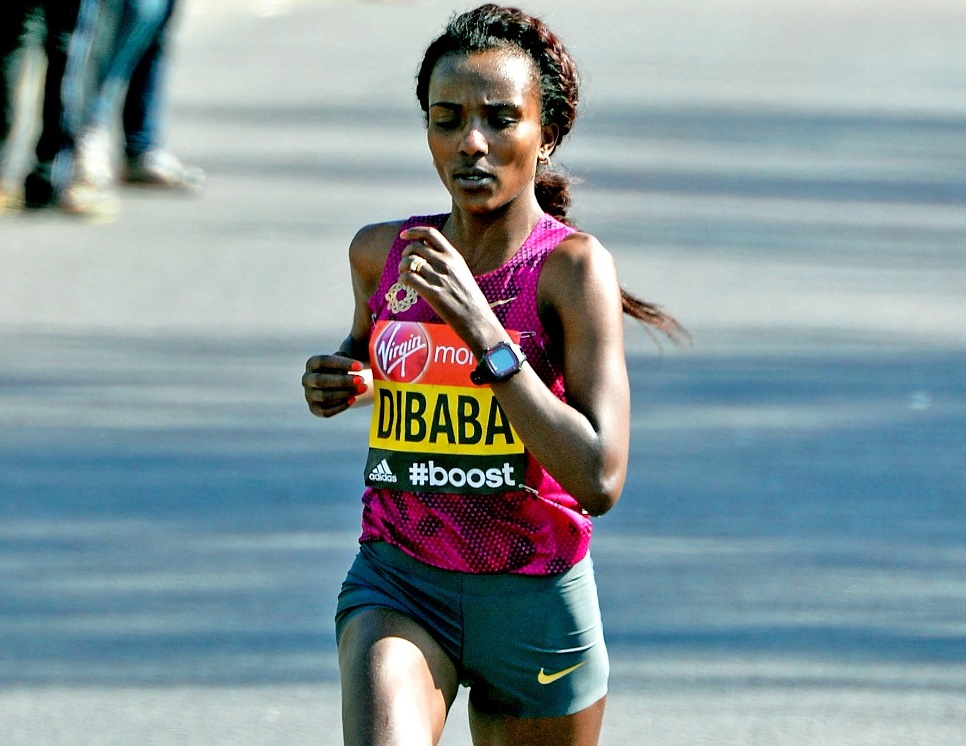What does your arm swing look like when you run? The arm swing method we are most familiar with involves pumping the arms back and forth at your sides. However, there appears to be a downside to swinging your arms this way in that the classic reciprocal arm swing method was found to have no advantage on running performance.

Classic Arm Swing Style No Advantage on Running Performance
It is assumed that pumping your arms back and forth will supply more drive to your stride. However, Hinrichs et al. (1987) found that the arms did not contribute to drive, and arm pumping actually reduced changes in forward velocity rather than increased it.
If anything, the classic style of arm swing is mildly threatening to a runner in terms of injury and energy expenditure. Why? Because we are told to aggressively pump our arms to move the legs faster, thus running speed will magically increase. But, this wastes energy, not to mention injury rates are higher in recreational runners, most of which use the classic style of arm swing as compared to habitual barefoot runners from East Africa who, many of which, use a crossover arm swing.
If anything, restraining your arm swing during running seems to work, perhaps better, than arm pumping. Miller et al. (2009), reported that restricting arm swing during running actually led to a lower ground reaction force, and more knee flexion (more knee bend) –which absorbs impact — and reduced knee adduction during stance, suggesting that the biomechanical changes associated with a lesser arm swing leads to more balance stability and less for production.

Cross-Over Arm Swing is Efficient
Surprisingly, the researchers found that by allowing the arms to swing slightly in front of the torso, crossing the midline, facilitates a more constant horizontal velocity.
- a crossover arm swing was found to reduce side-to-side excursions of the center of mass more effectively than the classic style of arm swing.

Overall, the researchers found that less physical effort invested in arm swing produces more desirable rewards. In other words, a self-selected arm swing (i.e. one that feels more natural) is a biomechanical characteristic that seems to serve runners all well. To make this point official, Hamner et al. (2010) found that arm pumping did not contribute to propulsion or stance.
So, what is the precise role of the arms in running? Balance.
Because of the greater distance of arm segments from the center of mass, the arms counterbalance angular momentum of the leg, therefore swinging the arms unnaturally may compromise balance and contribute to injury somewhere down the line. By the same token, most east African distance runners clearly use their arms differently during running compared to most joggers.
Most East African distance runners present a crossover (shown above), more natural-looking arm swing during running which seems to enrich their gait fluidity. In contrast, the classic style of arm swing seems to add impulsive movements and jerkiness to one’s gait.
When the arms are swung naturally, the body can access a more effective response to maintain balance, whereas implementing an over-controlled arm swing facilitates a variety of risky encounters.
More From Run Forefoot:
- Learn How to Forefoot Strike
- What Causes Overuse Knee Injury in Runners
- Mizuno Barefoot Shoe Review
- Minimalist Shoes for Forefoot Strikers
- How to Run Barefoot on Pavement
- Best Water Fuel Tablets
References:
Hamner SR., Seth A and Delp SL. Muscles contributions to propulsion and support during running. J Biomech, 2010; 43(14):2709-2716.
Hinrichs et al. Upper extremity function in running. I: center of mass and propulsion considerations. JAB, 1987; 3: 222-241.
Miller RH, Caldwell GE, Van Emmerik RE, et al. Ground reaction forces and lower extremity kinematics when running with suppressed arm swing. J Biomech Eng. 2009;131:124502.
Bretta Riches
BSc Neurobiology; MSc Biomechanics candidate, ultra minimalist runner & founder of RunForefoot. I was a heel striker, always injured. I was inspired by the great Tirunesh Dibaba to try forefoot running. Now, I'm injury free. This is why I launched Run Forefoot, to advocate the health & performance benefits of forefoot running and to raise awareness on the dangers of heel striking, because the world needs to know.
Latest posts by Bretta Riches (see all)
- Heel Strike Running Causes Slipped Discs - 25/04/2024
- How to Train Yourself to Not Heel Strike When Running - 24/04/2024
- Cushioned Running Shoes Found to Be Bad for Ankles - 23/04/2024

But doesn’t crossing over with your arms result in a cross-over gait with your legs? Legs and arms go hand-in-hand. Cross-over gait has a direct relationship with many running injuries. I agree you don’t want to pump your arms in a straight line front to back. That is unnatural. I’ve always heard your thumb should go hip to nip.